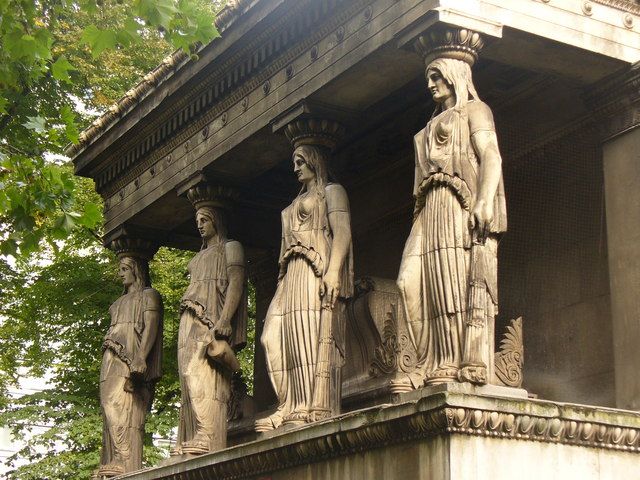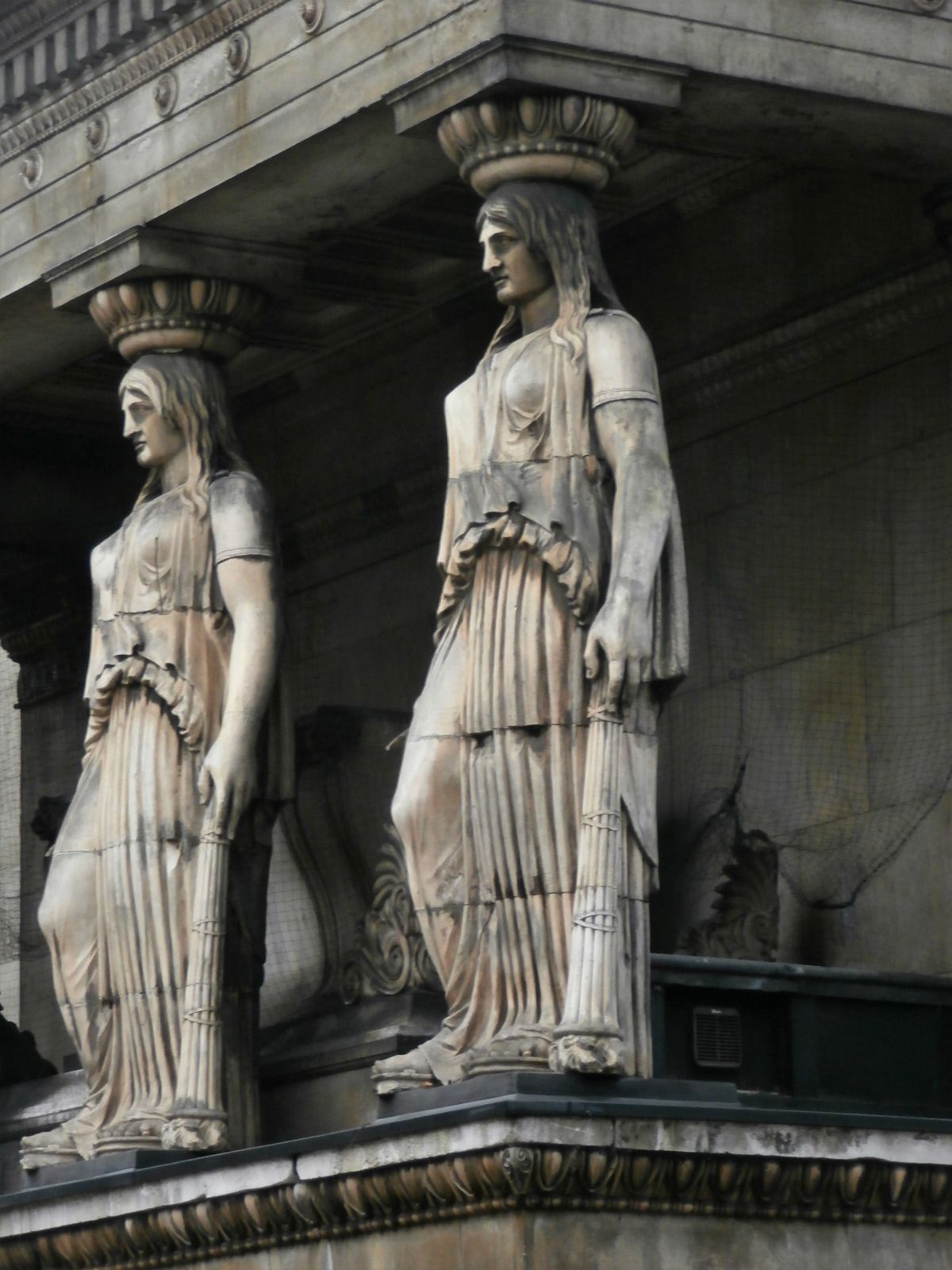About
Coade stone was a material developed in the 18th century comprised of a mix of clay, terracotta, silicates, and glass. It was, in fact, a type of ceramic, which once fired produced a hard-wearing artificial stone.
Coade stone soon became popular with sculptors, as it allowed them to create finely detailed ornamentation on buildings. (The exact formula of Coade stone was kept secret and is commonly thought to have died with its inventor, Eleanor Coade, though in fact it was rediscovered in the 1990s.)
One place that received the Coade stone treatment was London’s St Pancras Church on Euston Road, constructed in a Greek Revival style in the early 19th century (and rumored to be the most expensive place of worship erected in London since the rebuilding of St Paul’s Cathedral after the Great Fire). To aid in fully realising the Greek stylings, the sculptor John Charles Felix Rossi was commissioned to produce eight caryatids, sculpted female figures that serve as architectural supports. (In other words, really fancy pillars.)
Rossi spent three years sculpting the caryatids, only to come across a problem just before he was set to install them at the church. Turned out he had made them too tall to fit between the platforms on which they were to stand and the roof they had to support. Determined that his work would not be wasted due to an error in measurements, Rossi instead cut out part of the torso of each sculpture. The caryatids’ flowing robes enabled him to partially disguise his surgery.
St Pancras Church and the caryatids still stand, looking not too much the worse for wear despite enduring nearly two centuries of London pollution. Look closely at the figures and Rossi’s cuts are visible—though perhaps the biggest clue to his last-minute adjustments is that the legs of each caryatid are definitely disproportionately long.
Related Tags
Know Before You Go
The church (also called St Pancras New Church) is easy to find, located just across the street from Euston Station in Central London. The inside is not be open except for services.
The statues can be seen through the railings from the road at any time. For a close up view, enter through the car park entrance on Duke's Road, turn right, climb a step and go left across the grass.
Community Contributors
Added By
Published
December 21, 2018
























































